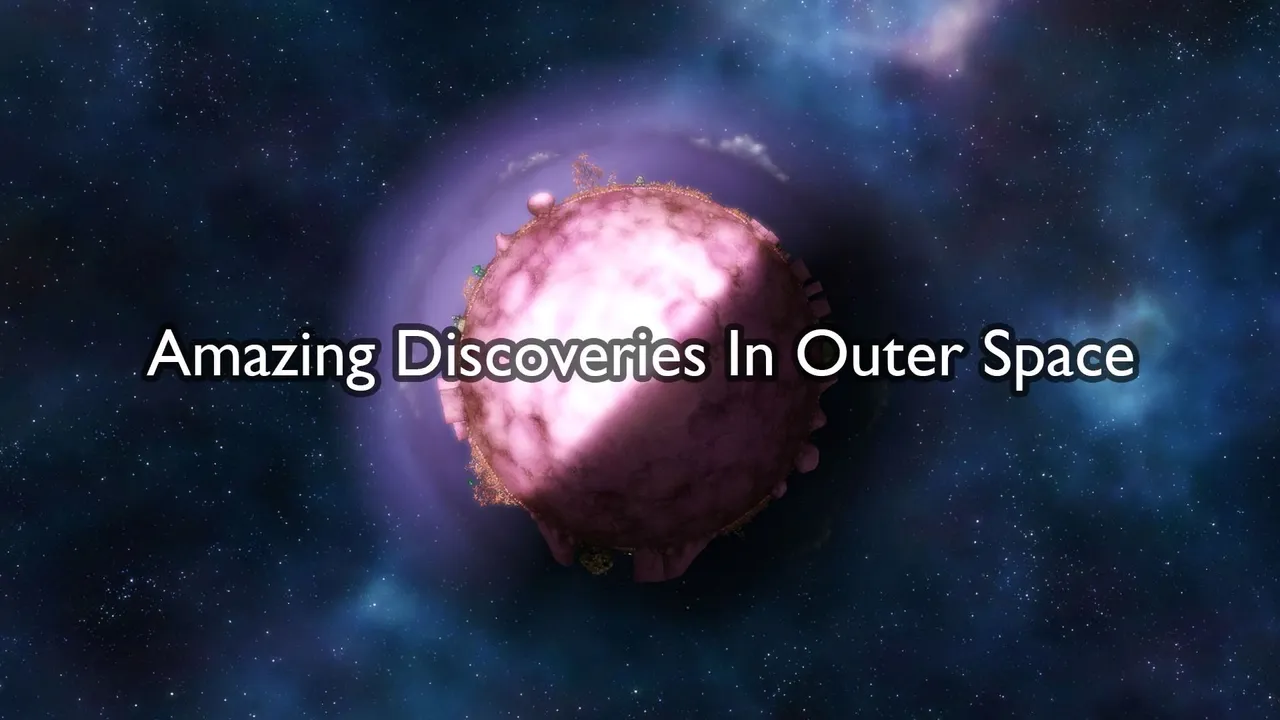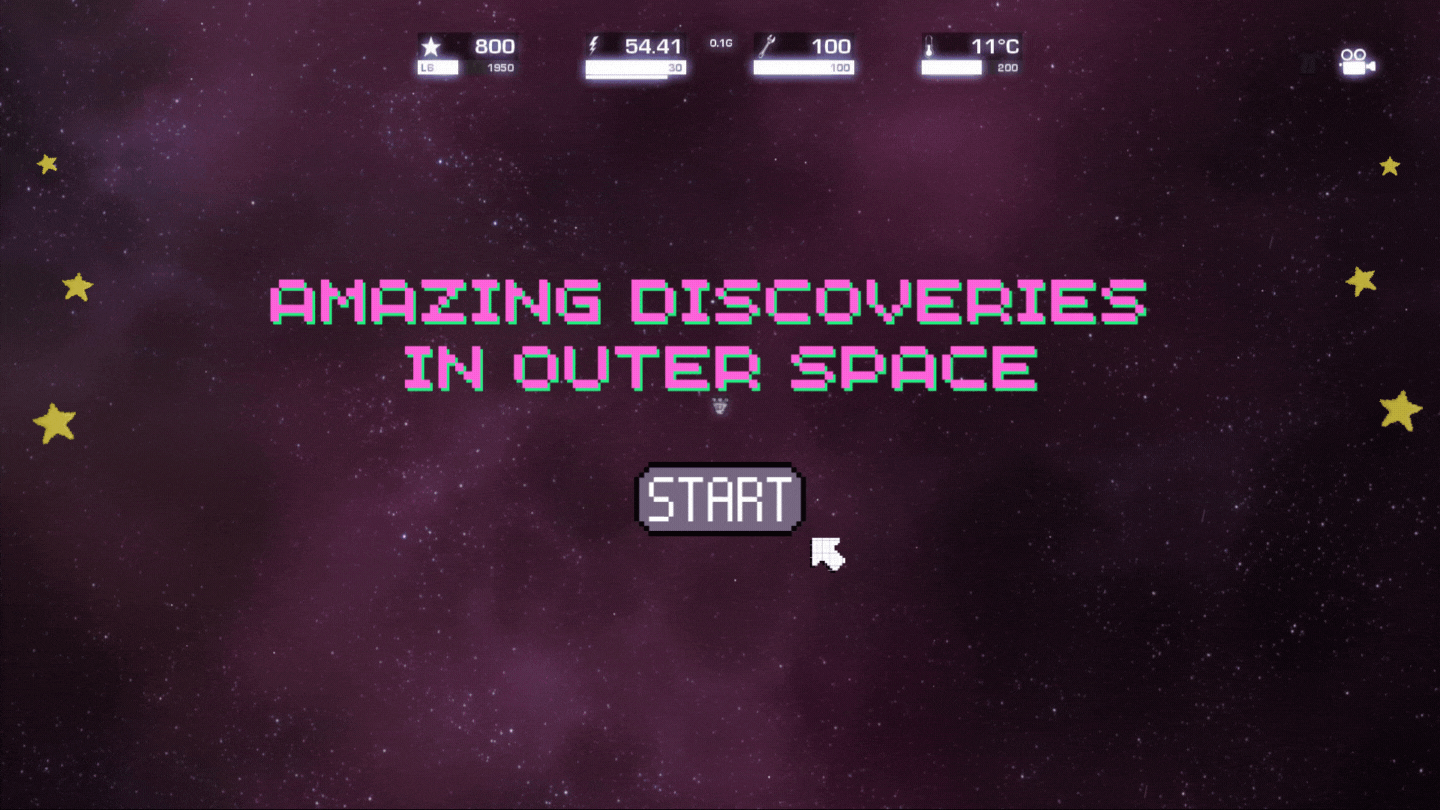
There is a good old saying that goes like this.
A picture says more than a thousand words.
That's what my post today aims at, Amazing Discoveries In Outer Space or by its acronym A.D.I.O.S is a space exploration game 'Em up where we will cross all kinds of solar systems in search of returning home.
This game has very interesting physics where practically the smallest of things can interfere with our exploration. To navigate through space we will have to calculate trajectories, orbit planets and be very careful when landing.
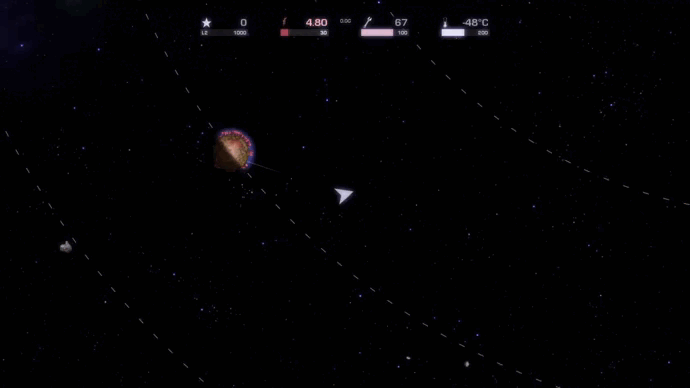
We must cross space and explore planets to get information from them and slowly rebuild our log, thus advancing a light year in each level, we must also be careful to have enough energy in our ship, this is essential, it serves to heal our astronaut, repair our ship and of course, navigate in space.
Each planet is a potential danger, its gravity can make it more or less difficult to land, it can be a hot planet where we should not stay long or one that orbits too many asteroids, which collide with it frequently, of course, this danger is what makes the game entertaining.
Let's get started. 

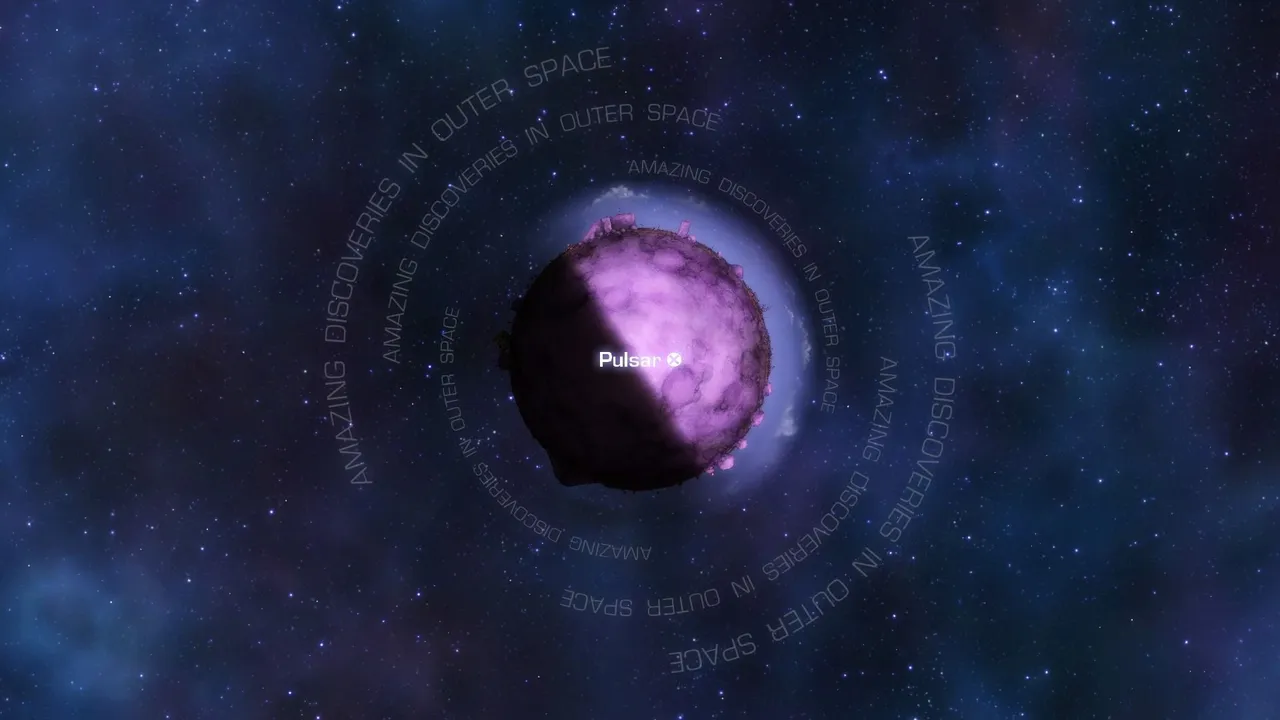
On the main screen we will have the option to start a new game, review the discoveries we have made playing and the tutorial and some game settings in help and options.

I'll start with the gameplay tutorial, the first log entry.
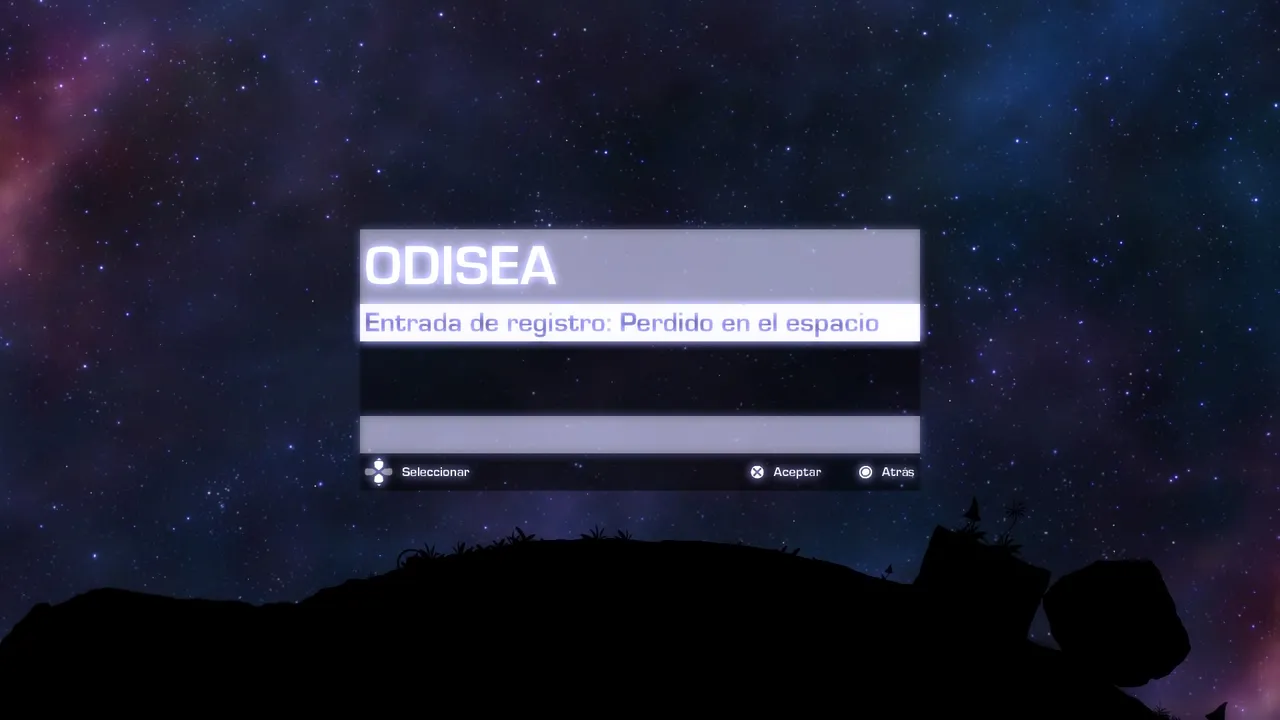
We will find ourselves in our ship, experiencing a failure, the only way to fix it is to restore a backup from almost 3 years ago.
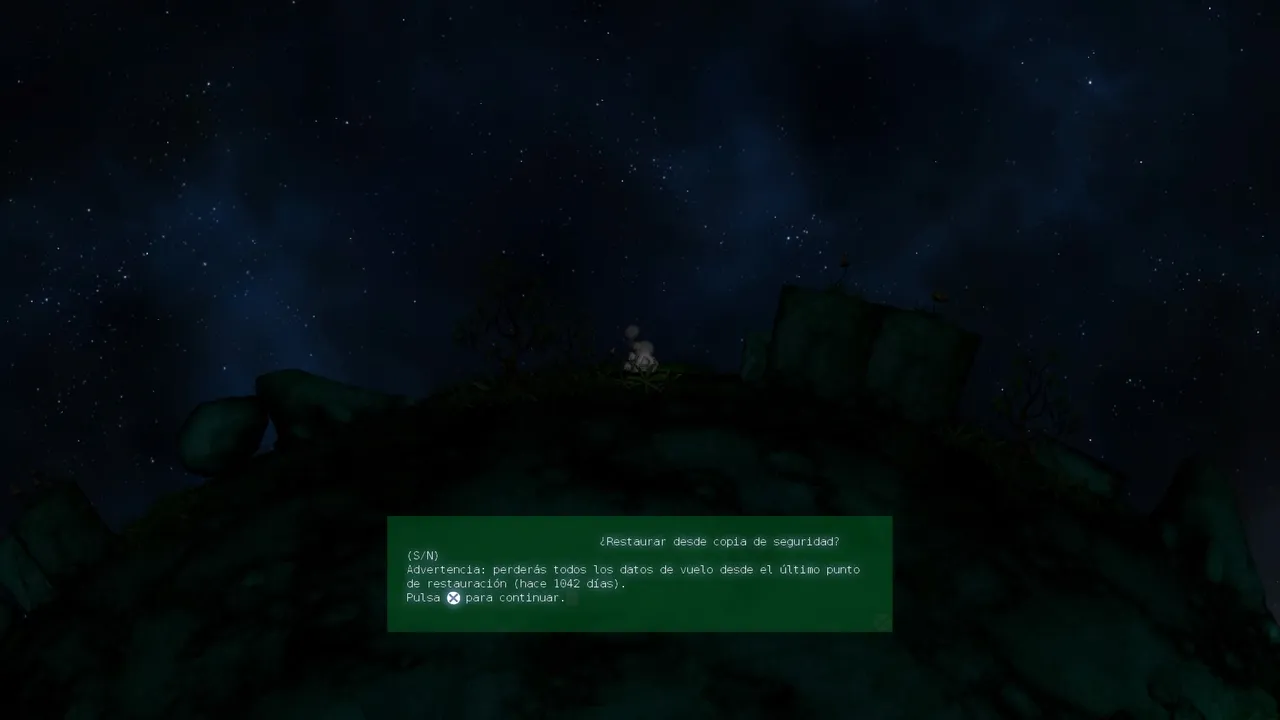
Once this is done, we will receive instructions on how to advance from solar system to solar system, one light year per level, for this we must scan planets, asteroids or life forms where we are, so the engine will be enabled to make a light trip to another point of the galaxy, closer and closer to home.
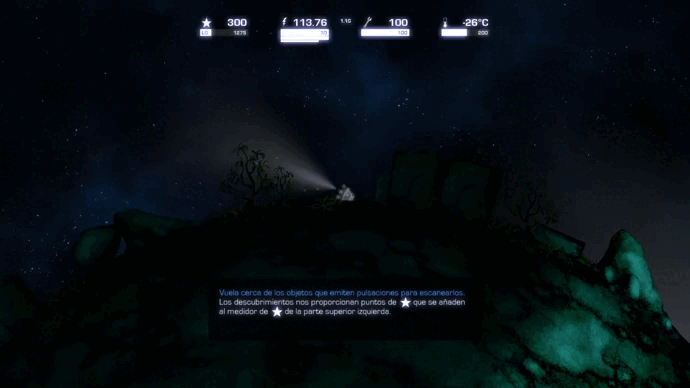
Once we have collected enough information, all we have to do is go into space and press the launch button, then the countdown begins.
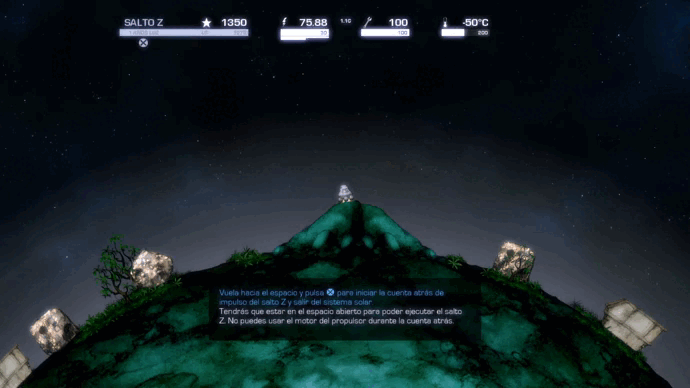
After each completed level we will add important points to unlock new things at the end of our game.
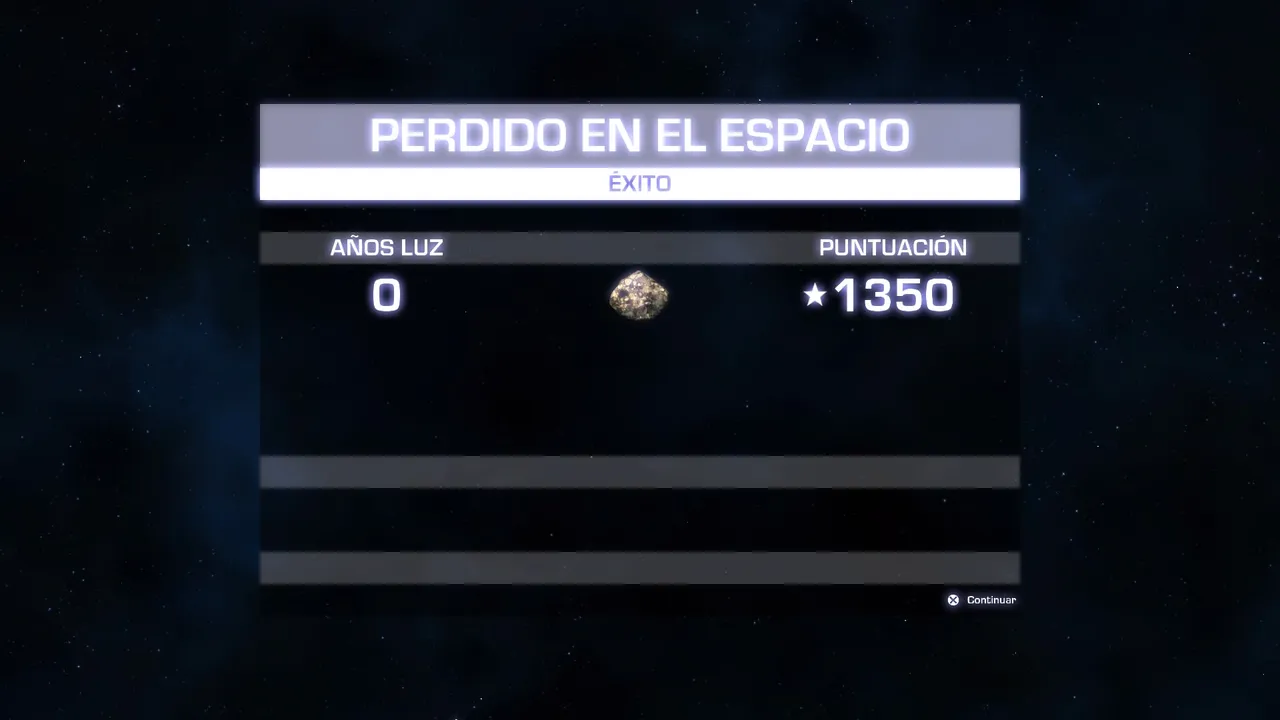
It is important to master the landing, although we can land abruptly on each planet, this is not the most recommended, since we would have to spend unnecessary fuel repairing the ship every few planets traveled.
Be careful with the speed when landing, the ship will heat up and maybe…

We don't always need to drive the ship using the engine and power, this is unnecessary, most of the time we can just speed up a bit, calculate the trajectory and make the time go by fast.
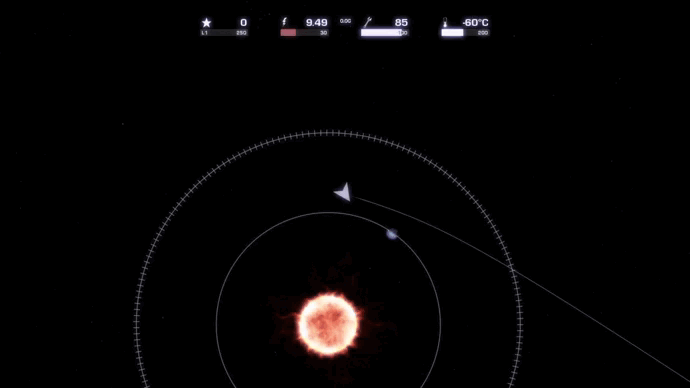
The attraction of the closest star, call it the sun, greatly influences our ship, we can always play with it to trace routes through the solar system.
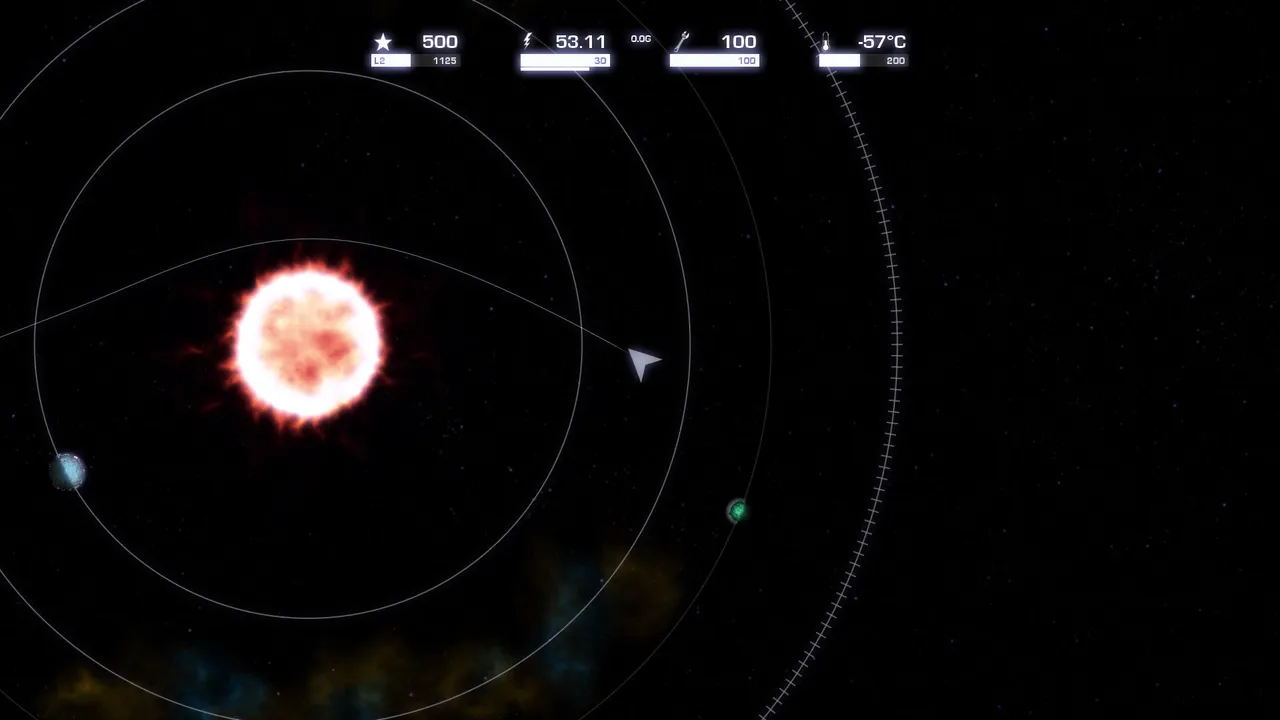
Calculating quite well we can cross from one side of the solar system to another, in a simple way, without hurting ourselves and saving fuel.
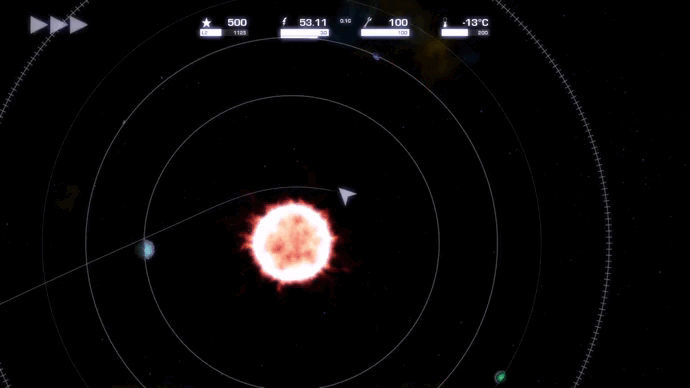
Note that most of the time in space I don't get to use fuel, the star's own force of attraction propelled me to the planet. Just calculate a bit at the end.
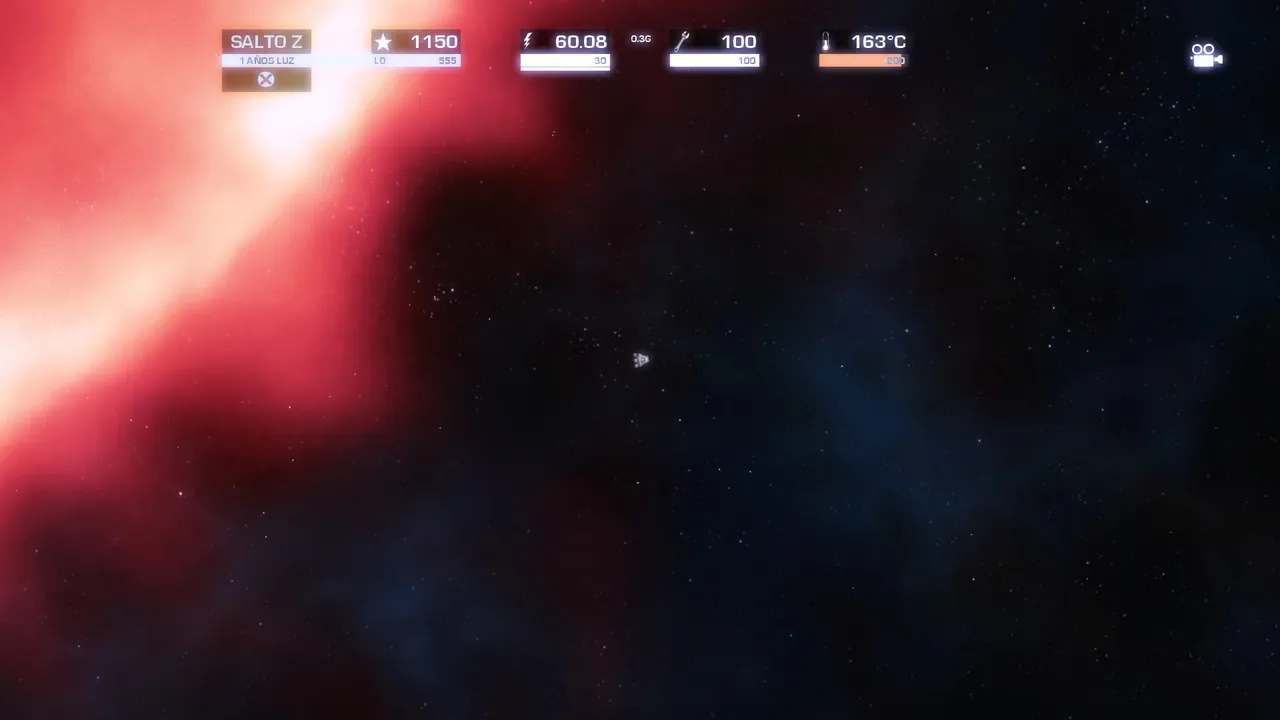 Cool how close you can get without getting burned though it gets very hot.
Cool how close you can get without getting burned though it gets very hot.
After the landing example let's continue with the next part of the tutorial, on another planet.
And we landed on the next planet, one with enough fuel, in these cases the best idea is to collect the fuel with the astronaut to save the used one by moving the ship, however at this point it was still not possible to get off the ship.
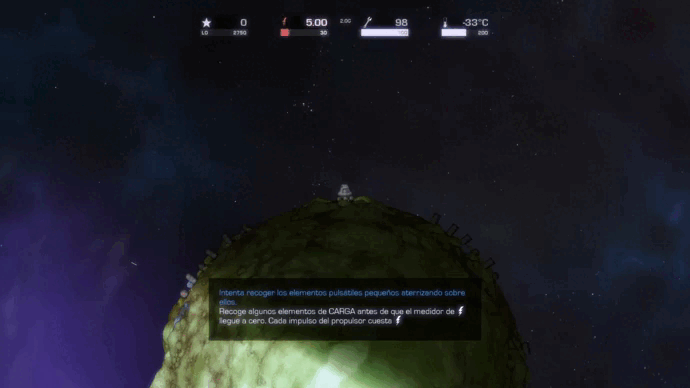
The towing cable will be something essential in our journey through the galaxy, with it we can move asteroids, rocks, and all kinds of things, the important thing is to be creative, to use it, simply point the bottom of the ship towards what we want to tow and activate it. Then we must use the ship to make it fly or drag it.
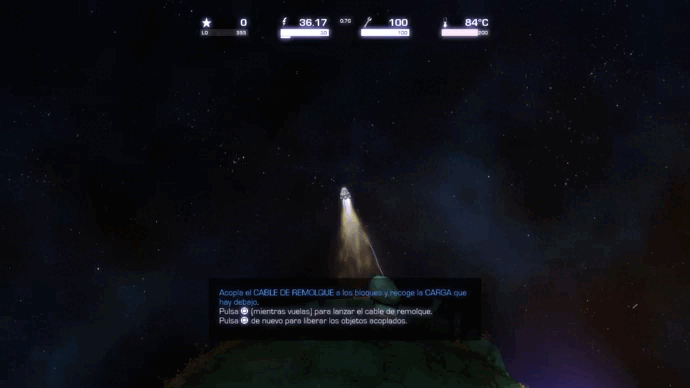
We can also connect to other abandoned ships to get some energy out of them, this is very important when going through solar systems where there are only asteroids and old satellites, so we can get some fuel in these sterile solar systems.
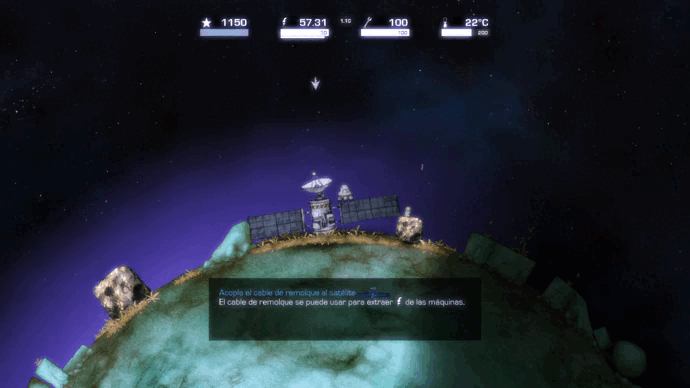
Until now these types of solar systems have been the most difficult for me to go through, you have to use a lot of fuel to avoid the asteroids and also find a lot of old ships and asteroids with minerals to be able to advance to the next solar system.
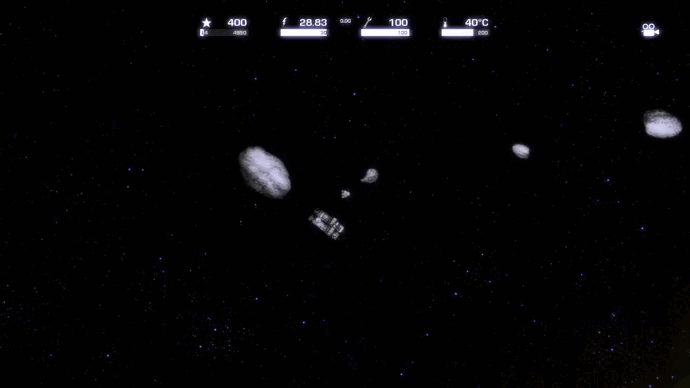
Look at the rings of rocks there, by this point I felt practically finished, but giving up is not my thing, so I decided to continue.
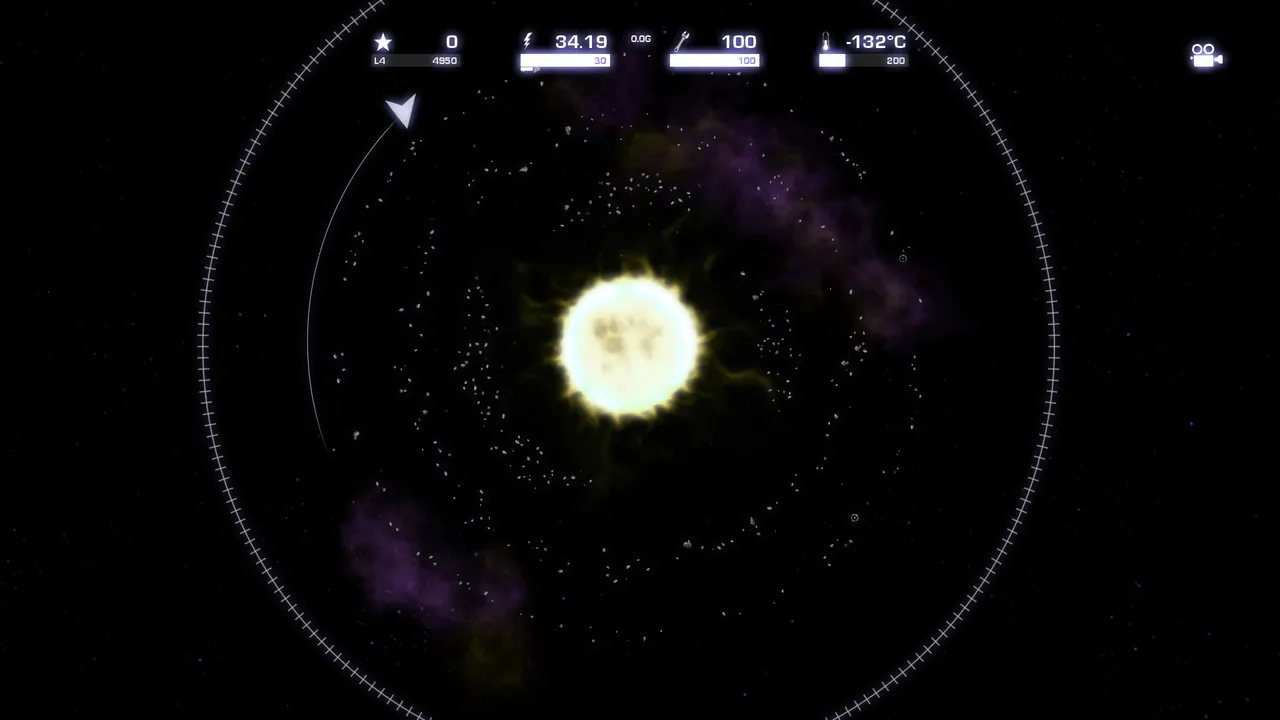
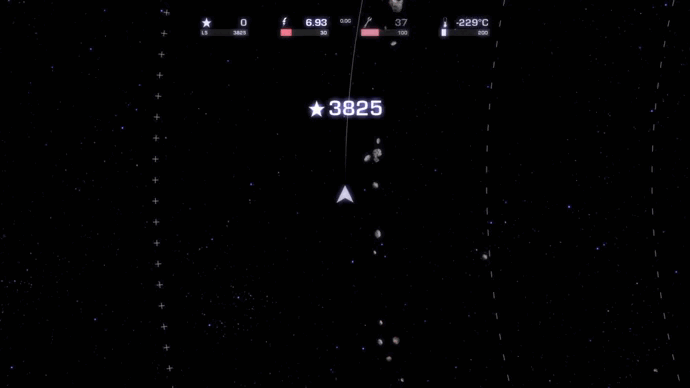
Here is an example of a planet that orbits near a bunch of asteroids, it is easy to see a giant rock impact near our ship in this type of planets.
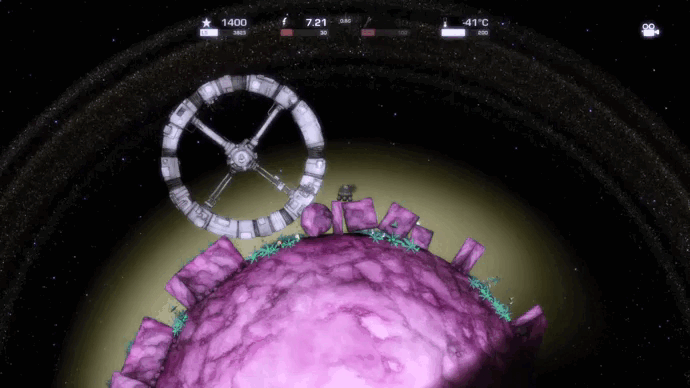
With bad luck one can fall on our ship, or even astronaut.
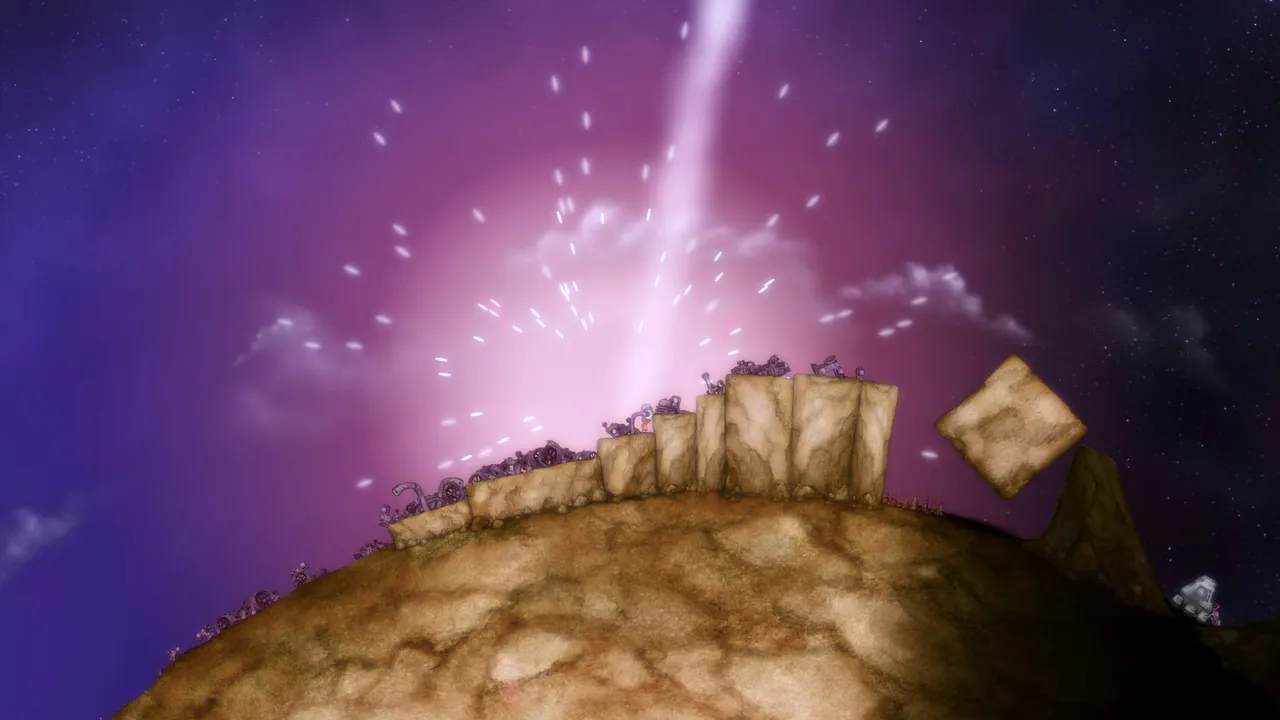
My ship at this point was super damaged, too bad it didn't unlock the astronaut yet, with whom we can repair our ship. However, in the next game I already had it, so here goes the example well, it's not time for regrets...
For when our ship is damaged there is nothing better than taking our astronaut out and repairing it!
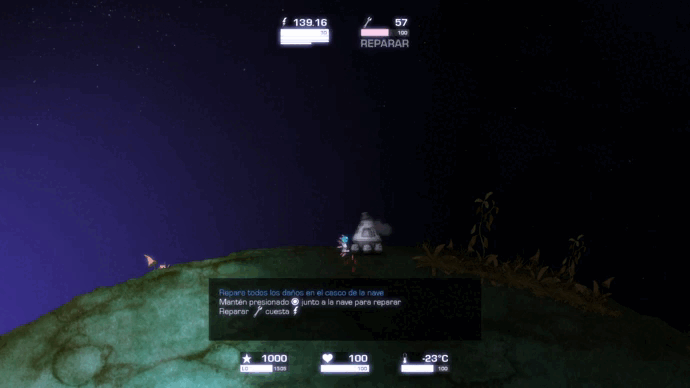
Of course, repairing our ship is not the only thing the astronaut can do, knowing when to exit the ship can be the difference between a successful departure and one that does not.

With the astronaut we can move objects, scan life forms and scan unique objects for him.
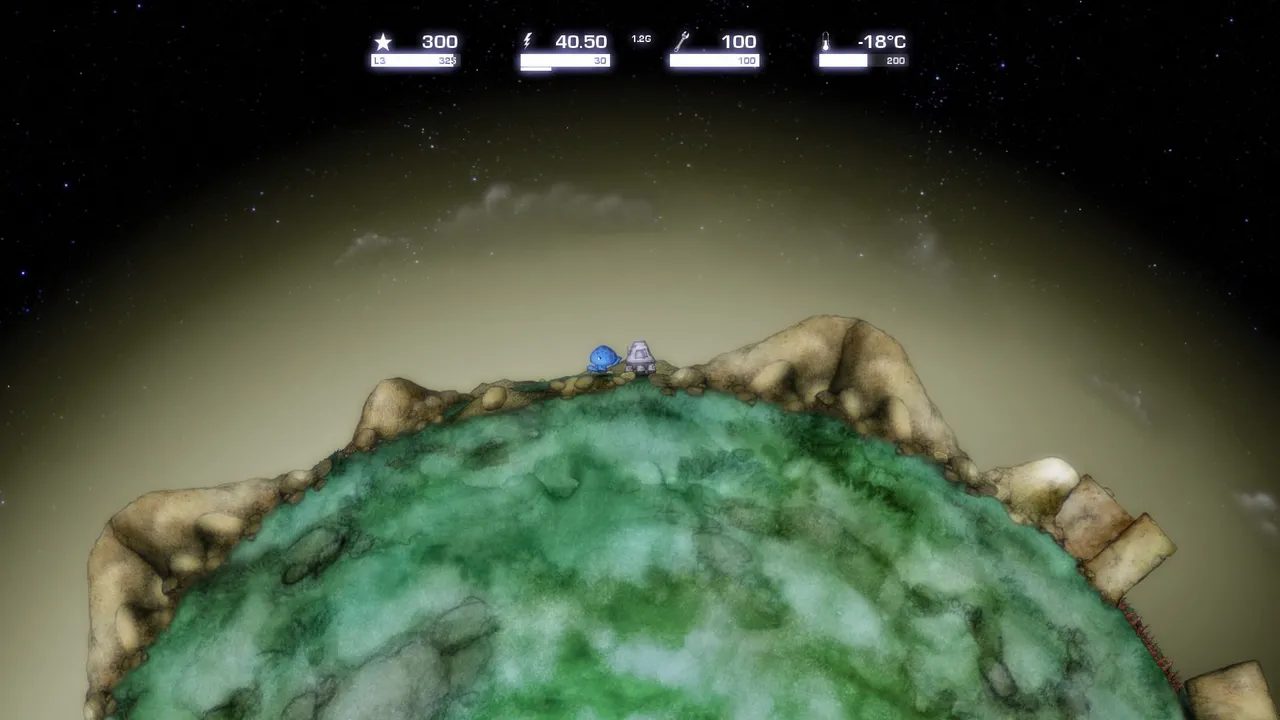 So little and blue just look at <3
So little and blue just look at <3
It also has a special device, shaped like a hat to have extra weight on planets with low gravity. Although we can discard it whenever we want, and experience some fun things, like jumping super high, or dragging heavy things, like giant rocks or our spaceship!
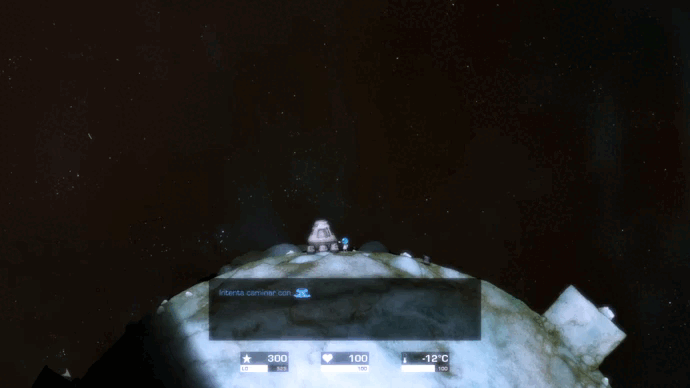
Finally in the tutorial we will have the jetpack, with which we can fly a little with our astronaut, it is important to know how to use this jetpack wisely, because it uses fuel from the ship and spends much more than the ship.
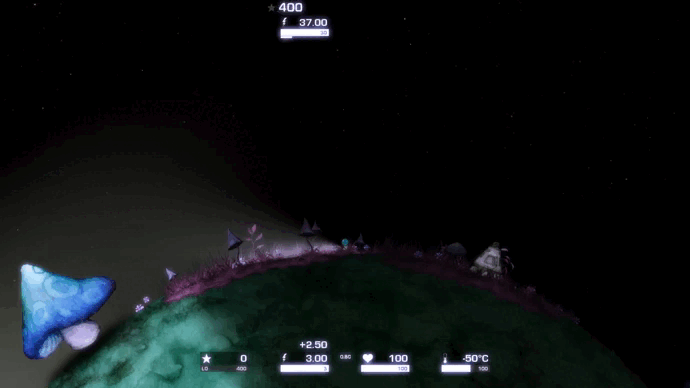
And well, after this review I will leave a little of my opinions of the game, it is worth saying that I loved it and it seems to me that it has a very original mechanics, it has a very good soundtrack, this helps us feel less alone in the vast space, other times to feel more alone.
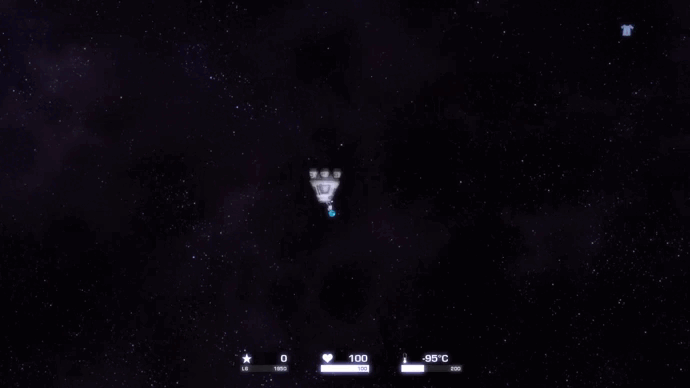
Final score. 

Amazing Discoveries In Outer Space is a very special space exploration video game, I won't say that it is the most innovative, or the best space exploration video game, but seriously it makes you fall in love, everything it does it does absolutely well, no it goes on too long, introduces simple mechanics that make our journey quite frustrating and makes us start again and again, however in the process you feel happy, full, content and in the mood to see the next solar system, the next planet, the next challenge.
Looking forward to exploring the galaxy and coming home! A trip that you would certainly repeat.
| Graphics: 9 | ||
|---|---|---|
The graphic part is quite great, you can spend time just admiring the scenarios, the solar system where you are or the trajectories traced by the spaceship, easily for all this you can give it a 10, in my case I will not subtract a single point for what astronauts and life forms are seen out of context, at least with respect to the scenarios.
| Gameplay: 10 | ||
|---|---|---|
It's incredibly addictive, you can be all the time trying to learn how to land better, not only avoiding taking damage, you can also learn how to use the stars to orbit the solar system, or give small impulses and let gravity do its thing, this mechanic and the realistic physics make the game quite addictive and cool, but the simplicity with which you are taught and you can execute everything makes it an excellent game.
| Story/Originality: 8 | ||
|---|---|---|
There is no history, nor is it the game with the most original theme, that must be accepted, however in general it is a game that does things well, I have played many space exploration simulators and most of them are confusing and unnecessarily complicated, And yes, A.D.I.O.S may not be the most original or realistic exploration simulator, but it is definitely a very complete and entertaining one, and it also manages to execute its mission excellently.




Hay un buen viejo dicho que reza así.
Una imagen dice más que mil palabras.
A eso apunta mi post hoy, Amazing Discoveries In Outer Space o por su acrónimo A.D.I.O.S es un juego de exploración espacial ‘Em up donde atravesaremos todo tipo de sistemas solares en busca de volver a casa.
Este juego tiene una física muy interesante donde prácticamente la menor de las cosas puede interferir en nuestra exploración, para navegar por el espacio deberemos calcular trayectorias, orbitar planetas y tener mucho cuidado a la hora de aterrizar.

Deberemos atravesar el espacio y explorar planetas para conseguir información de ellos y reconstruir lentamente nuestra bitácora, así avanzar un año luz en cada nivel, también deberemos tener cuidado de tener suficiente energía en nuestra nave, esta es indispensable, sirve para curar a nuestro astronauta, reparar nuestra nave y claro, navegar en el espacio.
Cada planeta es un peligro potencial, su gravedad puede hacer más o menos difícil aterrizar, puede ser un planeta caliente donde no deberemos permanecer mucho tiempo o uno que orbita demasiados asteroides, lo cuales chocan con el frecuentemente, por supuesto, este peligro es lo que hace el juego entretenido.
Empecemos. 


En la pantalla principal tendremos la opción de empezar una nueva partida, de revisar los descubrimientos que hemos hecho jugando y el tutorial y algunas configuraciones del juego en ayuda y opciones.

Empezare con el tutorial de juego, la primera entrada del registro.

Nos encontraremos en nuestra nave, experimentando una falla, la única forma de arreglarla es restableciendo una copia de seguridad de hace casi 3 años.

Una vez hecho esto nos recibiremos instrucciones de cómo avanzar de sistema solar en sistema solar, una año luz por nivel, para ello deberemos escanear planetas, asteroides o formas de vida donde nos encontremos, así se habilitara el motor para hacer un viaje luz a otro punto de la galaxia, cada vez más cerca de casa.

Una vez que hemos recolectado suficiente información solo deberemos salir al espacio y presionar el botón de despegue, entonces empieza la cuenta regresiva.

Tras cada nivel completado sumaremos puntos importantes para desbloquear nuevas cosa al terminar nuestra partida.

Es importante dominar el aterrizaje, si bien podemos aterrizar bruscamente en cada planeta, esto no es lo más recomendado, pues tendríamos que gastar combustible innecesario reparando la nave cada tantos planetas recorridos.
Cuidado con la velocidad al aterrizar, la nave se calentara y puede que…

No siempre necesitamos impulsar la nave usando el motor y energía, esto es innecesario, la mayor parte de las veces podemos simplemente acelerar un poco, calcular la trayectoria y hacer que el tiempo pase rápido.

La atracción de la estrella más cercana, llámese sol influye mucho en nuestra nave, siempre podemos jugar con ella para trazar rutas a través del sistema solar.

Calculando bastante bien podemos atravesar de un lado del sistema solar a otro, de manera sencilla, sin hacernos daño y ahorrando combustible.

Nótese que la mayor parte del tiempo en el espacio no llegue a utilizar combustible, la propia fuerza de atracción de la estrella me impulso al planeta. Solo calcule un poco al final.
 Es genial lo cerca que puedes pasar sin quemarte, aunque claro la nave se llega a calentar mucho.
Es genial lo cerca que puedes pasar sin quemarte, aunque claro la nave se llega a calentar mucho.
Tras el ejemplo de aterrizaje sigamos con lo siguiente del tutorial, en otro planeta.
Y aterrizamos en el siguiente planeta, uno con bastante combustible, en estos casos la mejor idea es recolectar el combustible con el astronauta para ahorrar el usado moviendo la nave, sin embargo para este punto aun no era posible bajarse de la nave.

El cable de remolque será algo indispensable en nuestro viaje por la galaxia, con el podremos mover asteroides, rocas, y todo tipo de cosas, lo importante es ser creativo, para usarlo basta con apuntar la parte inferior de la nave hacia lo que deseamos remolcar y activarlo. Ya luego debemos usar la nave para hacerlo volar o arrastrarlo.

También podremos conectarnos a naves otras naves abandonadas para sacarles algo de energía, esto es muy importante a la hora de atravesar sistemas solares donde solo hay asteroides y satélites viejos, así podremos lograr obtener algo de combustible en estos sistemas solares estériles.

Hasta ahora este tipo de sistemas solares son los que más me han costado atravesar, tienes que usar mucho combustible para esquivar los asteroides y además encontrar un montón de naves viejas y asteroides con minerales para poder avanzar a el siguiente sistema solar.

Observen los anillos de rocas que hay, para este punto me sentía prácticamente acabado, pero nada rendirme no es lo mío, así que decidí seguir.


Acá les dejo un ejemplo de un planeta que orbita cerca de un montón de asteroides, es fácil ver impactar una roca gigante cerca de nuestra nave en este tipo de planetas.

Con mala suerte puede caer una sobre nuestra nave, o incluso astronauta.

Mi nave en este punto estaba súper dañada, una lástima que aún no desbloqueaba al astronauta, con quien podemos reparar nuestra nave. Sin embargo en la siguiente partida ya lo tenía, así que ahí va el ejemplo pues no es tiempo de lamentos…
¡Para cuando nuestra nave está dañada no existe nada mejor que sacar a nuestro astronauta y repararla!

Por supuesto, reparar nuestra nave no es lo único que puede hacer el astronauta, saber cuándo salir de la nave puede ser la diferencia entre una partida exitosa y una que no.

Con el astronauta podremos mover objetos, escanear formas de vida y escanear objetos únicos para él.
 Tan solo vean a ese pequeño y azul amiguito <3
Tan solo vean a ese pequeño y azul amiguito <3
También cuenta con un dispositivo especial, con forma de sombrero para tener peso extra en planetas con baja gravedad. Aunque podemos desecharlo cuando queramos, y experimentar algunas cosas divertidas, como saltar súper alto, o arrastrar cosas pesadas, como rocas gigantes o nuestra nave espacial!

Por ultimo en el tutorial tendremos el jetpack, con el cual podremos volar un poco con nuestro astronauta, es importante saber usar este jetpack con inteligencia, pues usa combustible de la nave y gasta mucho más que la nave.

Y pues tras esta review dejare un poco de mis opiniones del juego, vale la pena decir que me encanto y me parece que tiene una mecánica demasiado original, cuenta con una banda sonora muy buena, esta nos ayuda sentirnos menos solos en el basto espacio, otras veces a sentirnos a un más solos.

Puntuación final. 

Amazing Discoveries In Outer Space es un videojuego de exploración espacial sumamente especial, no diré que es el más innovador, o el mejor videojuego de exploración espacial, pero enserio llega a enamorarte, todo lo que hace lo hace absolutamente bien, no se extiende demasiado, introduce mecánicas sencilla que frustran bastante nuestro viaje y nos hace empezar una y otra vez sin embargo en el proceso te sientes feliz, lleno, contento y con ánimo de ver el próximo sistema solar, el próximo planeta, el próximo reto.
¡Con ganas de explorar la galaxia y volver a casa! Un viajes que sin duda repetirías.
| Gráficos: 9 | ||
|---|---|---|
La parte grafica está bastante genial, puedes pasar el rato solo admirando los escenarios, el sistema solar donde te encuentras o las trayectorias que traza la nave espacial, fácilmente por todo esto puede darle un 10, en mi caso no restare un solo punto por lo fuera de contexto que se ven los astronautas y las formas de vida, al menos con respecto a los escenarios.
| Jugabilidad: 10 | ||
|---|---|---|
Es increíblemente adictivo, puedes estar todo el rato intentando aprender a aterrizar mejor, no solo evitando recibir daño, también puedes aprender a usar las estrellas para orbitar el sistema solar, o dar pequeños impulsos y dejar que la gravedad haga lo suyo, esta mecánica y las físicas realistas hacen al juego bastante adictivo y genial, pero la simpleza con la que te enseñan y puedes ejecutar todo lo hacen un juego excelente.
| Historia/Originalidad: 8 | ||
|---|---|---|
No hay nada de historia, tampoco es el juego con la temática más original, eso hay que aceptarlo, sin embargo en general es un juego que hace las cosas bien, he jugado muchos simuladores de exploración espacial y la mayoría son confusos e innecesariamente complicados, y sí puede que A.D.I.O.S no sea el simulador de exploración más original o realista, pero definitivamente es uno muy completo y entretenido, además logra ejecutar su acometido de manera excelente.


